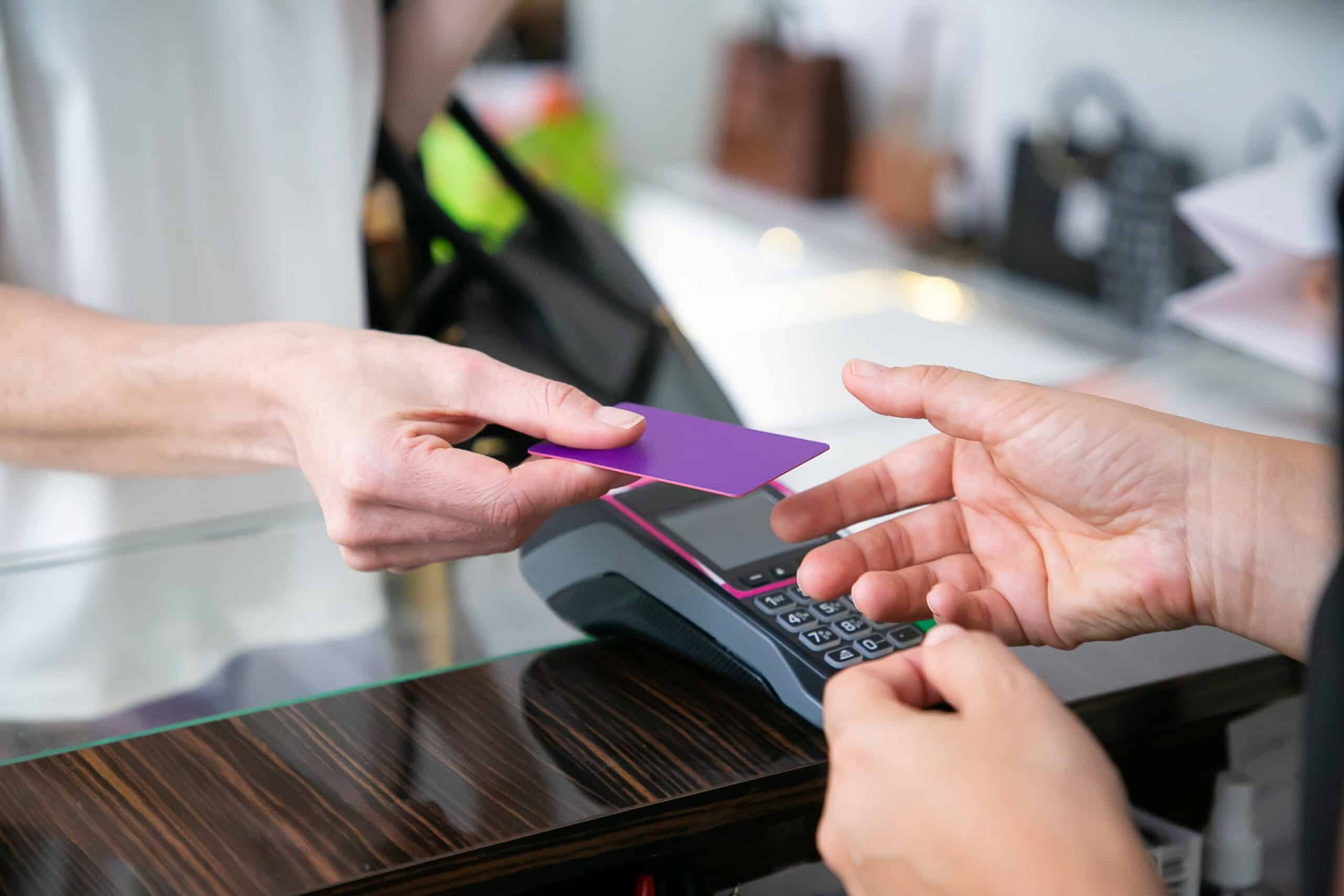Everything You Need to Know About Bank Identification Number Checkers

An in-depth exploration of Bank Identification Number (BIN) Checker, including its definition, history, functionality, benefits, limitations, future trends, and the importance of BINs for merchants and fraud prevention.
Overview of Bank Identification Number (BIN) Checker
A Bank Identification Number (BIN) checker is a pivotal tool in the realm of credit and debit card transactions, allowing businesses to identify the specific issuing bank or financial institution associated with each transaction. For example, when a customer makes a purchase using their credit card, the first six digits of the card number provide vital information about the card issuer, enabling the merchant to verify the authenticity of the transaction. This verification process is essential for preventing fraudulent activities and ensuring the security of online payments.
BIN checkers play a crucial role in streamlining payment processing procedures by allowing merchants to accept various forms of payment and expedite transaction processing. For instance, when a customer swipes their card at a point of sale terminal, the BIN checker swiftly identifies the card brand, type, and level, enabling a seamless transaction process. This efficiency not only enhances the overall payment experience for customers but also minimizes the risk of fraud by quickly verifying the legitimacy of each transaction.
Bank Identification Numbers (BINs) are not just random digits on a card; they hold significant information about the card issuer, card brand, and other essential details. Understanding the importance of BIN checkers in facilitating efficient payment processing sheds light on the critical role they play in the financial ecosystem. By swiftly identifying the issuing bank or financial institution, BIN checkers enable merchants to verify transactions. Also, prevent fraud, and ensure the smooth flow of online payments. This level of verification and authentication is integral to maintaining the integrity of financial transactions and safeguarding the interests of both businesses and consumers. Furthermore, the ability of BIN checkers to expedite transaction processing by quickly decoding card details. underscores their significance in enhancing operational efficiency and customer satisfaction in the digital payment landscape.
History and Evolution of Bank Identification Numbers (BINs)
The evolution of Bank Identification Numbers (BINs) traces back to their inception as a system designed to pinpoint card issuers and combat fraudulent practices within financial transactions [4]. Over time, BINs have transitioned from a basic identification tool to a critical component that ensures the security and compliance of the e-commerce industry. This evolution underscores the adaptability and importance of BINs in meeting the evolving needs of the digital commerce environment. For instance, the transition of BINs from a mere identification system to a sophisticated mechanism for authenticating payment processes highlights their evolution and growing relevance in the financial sector.
The significance of BINs in streamlining payment processes and enhancing customer data analysis for businesses cannot be overstated. BINs not only assist in identifying card issuers but also provide valuable insights that empower businesses to tailor their services. For example, by analyzing the demographics associated with specific BINs, companies can customize their promotional campaigns. Target the right audience segments, thereby improving customer engagement and loyalty. This strategic utilization of BIN information exemplifies how these numerical identifiers have transformed. From mere digits on a card to powerful tools for enhancing customer experience and driving business growth.
Bank Identification Numbers (BINs) have come a long way from their humble beginnings as identification numbers for card issuers. Today, they are integral to ensuring the security and compliance of online transactions. It playing a crucial role in preventing fraudulent activities and safeguarding the interests of businesses and consumers alike. BINs evolved from rudimentary to sophisticated. They verify and authenticate payment processes now. Their importance in digital commerce is underscored. The landscape of digital commerce is ever-changing. By understanding the history and evolution of BINs, businesses can leverage these numerical identifiers to enhance operational efficiency, improve customer data analysis, and stay ahead in the competitive e-commerce market.

Functionality of Bank Identification Number (BIN) Checker
When a BIN checker is utilized, it functions by extracting crucial card details, including the bank specifics, card brand, type, level, and issuer’s location, providing merchants with comprehensive information. For instance, when a customer makes a purchase using a credit card, the BIN checker decodes the first six digits of the card number to identify the issuing bank, which is essential for transaction authorization and verification. The detailed process of how BIN checkers extract card information, including bank details, card brand, card type, level, and issuer location, is instrumental in enabling businesses to verify transactions swiftly and accurately.
The importance of BIN checkers in allowing merchants to accept multiple forms of payment and expedite transaction processing cannot be overstated. By leveraging BIN checkers, businesses can diversify their payment acceptance methods, cater to a broader customer base, and enhance operational efficiency. For example, a BIN checker can swiftly identify the card type, allowing a merchant to offer tailored promotions or discounts specific to certain card brands, thereby improving marketing strategies and customer engagement. Additionally, BIN checkers provide insights for more efficient operations and fraud detection in e-commerce. By employing BIN checkers, businesses can proactively detect and prevent fraudulent activities, safeguarding both their interests and those of their customers.
Bank Identification Number (BIN) checkers are more than just tools for decoding numerical sequences on credit cards; they are the guardians of secure and efficient payment processing. By extracting vital card information, including bank details and issuer locations, BIN checkers enable merchants to verify transactions swiftly and accurately. This verification process is crucial for preventing fraudulent activities and ensuring the integrity of online payments. Furthermore, the role of BIN checkers in allowing merchants to accept multiple forms of payment and expedite transaction processing underscores their significance in enhancing operational efficiency and customer satisfaction in the digital payment landscape.
Benefits of Bank Identification Number (BIN) Checker
Bank Identification Number (BIN) checkers offer a multitude of advantages to merchants in the realm of financial transactions. One significant benefit is the ability of BIN checkers to not only assess transactions but also play a crucial role in preventing fraud. For instance, when a customer initiates a credit card transaction, the BIN checker swiftly verifies the authenticity of the card by cross-referencing the BIN with the issuing bank’s database, thus flagging any suspicious activities that may indicate fraudulent behavior. The explanation of how BIN checkers help merchants in assessing transactions, preventing fraud, and verifying customer addresses sheds light on the critical role they play in safeguarding the interests of businesses and consumers. By employing BIN checkers, businesses can proactively detect and prevent fraudulent activities, ensuring secure and reliable payment processing.
Moreover, BIN checkers provide essential insights that empower businesses to tailor their promotional strategies effectively. For example, by analyzing the demographics of customers associated with specific BINs, companies can customize their marketing campaigns to target the right audience segments. This tailored approach enhances the overall effectiveness of marketing efforts, resulting in improved customer engagement and potentially higher conversion rates. Additionally, the detailed information obtained from BIN checkers enables businesses to refine their sales strategies by understanding customer preferences and behaviors more accurately, ultimately leading to increased sales and customer satisfaction. The comprehensive data derived from BIN checkers not only aids in marketing endeavors but also plays a vital role in enhancing customer experience and fostering long-term customer loyalty.
By providing merchants with insights for more efficient operations and fraud detection in e-commerce, BIN checkers play a crucial role in safeguarding the interests of businesses and consumers alike. For instance, the ability of BIN checkers to verify customer addresses, prevent fraudulent activities, and provide valuable data for chargeback analysis underscores their significance in enhancing operational integrity and customer trust. Moreover, by empowering businesses to tailor promotions and analyze customer demographics effectively, BIN checkers contribute to improved marketing strategies and enhanced customer engagement, ultimately driving business growth and success.

Limitations and Security Measures of Bank Identification Number (BIN) Checker
While Bank Identification Numbers (BINs) offer valuable insights into card information, they are not immune to fraudulent activities such as scamming and cloning. For instance, scammers may exploit BINs to create counterfeit cards or conduct unauthorized transactions, highlighting the importance of robust security measures. By implementing stringent BIN checking processes, businesses can effectively identify and prevent potential fraudulent transactions, thus protecting both their finances and customer data. The discussion on common fraud tactics like BIN scamming and cloning emphasizes the need for secure handling practices to safeguard against fraudulent activities and protect customer information. By implementing measures to safeguard BIN confidentiality and prevent fraud, such as real-time verification and fraud pattern detection, businesses can enhance the security of their payment processing systems and mitigate risks associated with fraudulent activities.
Moreover, to bolster security within payment processing systems, advanced measures like real-time verification and fraud pattern detection are being increasingly utilized. For example, real-time verification allows merchants to authenticate transactions instantly, reducing the risk of fraudulent activities. Additionally, fraud pattern detection algorithms can analyze transaction data to identify irregular patterns indicative of potential fraud. enabling businesses to take proactive measures to mitigate risks and enhance overall security measures. These security protocols not only safeguard against fraud but also instill trust and confidence in customers engaging in online transactions. The importance of implementing BIN checking measures to flag potential fraudulent transactions and protect customer data underscores the critical role these security measures play in ensuring the integrity and security of financial transactions.
The discussion on common fraud tactics like BIN scamming and cloning highlights the vulnerabilities that exist within the payment processing system. To combat these fraudulent activities effectively, businesses must implement robust security measures and adhere to best practices in BIN handling. By adopting measures such as real-time verification and fraud pattern detection, companies can proactively identify and prevent potential fraud, safeguarding both their financial interests and customer data. Additionally, the emphasis on safeguarding BIN confidentiality and preventing fraud underscores the importance of maintaining the integrity and security of payment processing systems in the face of evolving cyber threats.
Future Trends and Innovations in Bank Identification Number (BIN) Checker
Looking ahead, the evolution of Bank Identification Number (BIN) technology is set to revolutionize fraud prevention and security measures within the financial industry. For instance, the integration of Artificial Intelligence (AI) and Machine Learning (ML) algorithms into BIN checkers will enable real-time data analysis to detect suspicious patterns and anomalies in transactions, thus fortifying the defenses against fraudulent activities. An illustrative example is how AI swiftly identifies irregular purchase behaviors. It detects discrepancies in transaction locations. AI flags them for further investigation. This prevents potential fraudulent transactions. Exploring emerging technologies like AI, ML, biometric authentication, dynamic BINs, and tokenization enhances fraud prevention. This underscores the industry’s commitment to leveraging innovation. It aims for improved security and efficiency in financial transactions.
The future of BINs is expected to incorporate biometric authentication methods and dynamic BINs. This further enhances security protocols for payment card transactions. Biometric authentication, like fingerprint or facial recognition, adds an extra layer of security. It ensures the rightful cardholder initiates the transaction. This advancement can significantly reduce instances of identity theft and unauthorized card usage. Additionally, the implementation of dynamic BINs, which generate unique identification numbers for each transaction, can thwart cybercriminals attempting to intercept and misuse static BIN information. This dynamic approach exemplifies the proactive stance taken by the industry to stay ahead of evolving fraud tactics. By embracing these cutting-edge technologies and security initiatives, businesses can fortify their fraud prevention strategies and enhance the overall security of financial transactions.
The future implications of BIN checkers are intertwined with technological advancements. They evolve with financial transactions. Exploring emerging technologies like AI, ML, biometric authentication, and dynamic BINs is crucial. Businesses can stay ahead of fraud tactics. They enhance security measures in payment processing systems. For instance, the integration of biometric authentication methods can significantly strengthen the security of online transactions by adding an extra layer of verification. Additionally, dynamic BINs adoption enhances security protocols. They generate unique identification numbers for each transaction. This makes it challenging for cybercriminals to exploit static BIN information. Embracing these innovations fortifies fraud prevention strategies for businesses. It ensures integrity and security of financial transactions in the digital age.
Major Industry Identifier (MII) and BIN/IIN System
The Major Industry Identifier (MII) is fundamental in the BIN/IIN system. It offers insights into card types, brands, and issuing banks. For example, if the MII is ‘4’ for a credit card number, it belongs to the banking and financial industry. This enables quick recognition and classification of the institution. This system aids in the seamless identification and verification of cards, ensuring efficient and accurate processing during transactions. Understanding the Major Industry Identifier (MII) and BIN/IIN system is crucial. They shed light on valuable card information. This includes types, brands, and issuing banks. For example, the first digit of a card number represents the MII. It plays a crucial role. This identifies the type of institution behind the card. It streamlines transaction processes.
Furthermore, the BIN/IIN system utilizes the first six digits of a credit card to pinpoint the specific institution that issued the card. For instance, if the first six digits of a card are ‘543210’, it indicates a specific financial entity. This allows for targeted analysis and tailored transaction procedures. This specificity enables businesses to enhance payment processing efficiency. They can swiftly verify transactions and detect irregularities promptly. Businesses delve into the BIN/IIN system and MII intricacies. They leverage this valuable information. Businesses optimize payment acceptance methods. They streamline transaction processes effectively. Understanding the symbiotic relationship between MII and the BIN/IIN system is crucial. It enhances operational efficiency and security in financial transactions.
Importance of BINs for Merchants
BINs are a cornerstone for merchants. They enable acceptance of various payment types. BINs ensure seamless transaction processing. They also ensure adherence to industry regulations. When a customer pays by credit card, the BIN is crucial. It identifies the issuing bank, card brand, and type. This facilitates swift transaction approval accurately. This overview emphasizes how BINs assist businesses. They accept various payment types efficiently. BINs help process transactions smoothly. They ensure compliance with industry standards. Their importance lies in ensuring secure payment processing. Moreover, BINs play a pivotal role in tailoring promotions, analyzing customer demographics, and enhancing customer experience. Merchants leverage BIN information. They customize marketing strategies. Merchants target specific customer segments. They optimize sales efforts. This drives business growth and customer loyalty.
Understanding the importance of BINs for merchants sheds light on their critical role in facilitating efficient payment processing. Ensure the security of financial transactions. By providing insights into card types, brands, and issuing banks, BINs enable businesses to verify transactions swiftly and accurately. Also, enhance operational efficiency and customer satisfaction. BINs verify customer addresses. They prevent fraudulent activities effectively. BINs provide valuable data for chargeback analysis. Their significance lies in enhancing operational integrity and customer trust. Additionally, the role of BINs in tailoring promotions, analyzing customer demographics. Also, improve sales strategies highlights their strategic value in driving business growth and enhancing the overall customer experience. By leveraging BIN information effectively, merchants can optimize their payment processing systems. Also, prevent fraud, and create personalized customer interactions that foster long-term relationships and loyalty.
Role of BIN Checkers in Fraud Prevention
BIN checkers are vital in the fight against fraud by verifying card authenticity. Also, prevent fraudulent activities, and ensure security in financial transactions. When a customer makes an online purchase, the BIN checker identifies the issuing bank. It verifies card details swiftly, preventing unauthorized transactions. BIN checkers play a vital role in verifying card authenticity. They prevent fraud and maintain security effectively. This underscores their significance in financial transaction integrity. Moreover, BIN checkers provide valuable insights for fraud prevention by detecting irregular patterns, providing geographical insights, and enhancing operational efficiency. Businesses leverage BIN checkers for fraud prevention. They detect and prevent potential fraudulent activities. This safeguards their financial interests and customer data.
In addition to their fraud prevention capabilities, real-time BIN checkers offer valuable insights. Contribute to operational efficiency and enhanced customer experience. By analyzing transaction patterns and geographical information, BIN checkers can detect anomalies or suspicious activities. Also, enable businesses to take immediate action to prevent fraud. This proactive approach not only protects against financial losses but also fosters trust with customers. As their transactions are securely monitored and verified. The benefits of using BIN checkers for fraud prevention, including real-time validation, fraud detection, geographical insights, and enhanced customer experience. Underscore their critical role in maintaining the security and integrity of financial transactions. By incorporating BIN checkers into their payment processing systems, businesses can fortify their fraud prevention strategies. Also, mitigate risks, and ensure a safe and reliable payment environment for their customers.

Conclusion and Future Implications of Bank Identification Number (BIN) Checker
The evolution of BIN checkers revolutionized financial transactions. They provide a robust mechanism for identifying issuing banks. BIN checkers also prevent fraudulent activities. For instance, during a credit card transaction, the BIN checker swiftly identifies the issuing bank, card brand, and type. Also, enable seamless verification and approval processes, thus enhancing operational efficiency. Real-time verification expedites transaction processing. It also flags potential discrepancies in details. Recap key points on BIN checkers’ significance. Gain a comprehensive understanding of their contribution to security.
Continuous advancements in BIN technology are emphasized. The importance of businesses staying informed is highlighted. Adopting digital payment software for future e-commerce transactions is crucial. This underscores the need for innovation and adaptation in the financial sector. By staying abreast of technological advancements and industry trends, businesses can leverage cutting-edge tools like tokenization and cybersecurity initiatives. Enhance the security and efficiency of their payment processing systems. The recap sheds light on key points about BIN checkers. It highlights their significance in financial transactions and fraud prevention. These tools play a critical role. They safeguard the interests of businesses and consumers. This is crucial in the ever-evolving digital payment landscape. Businesses can embrace innovation. They can stay proactive in fraud prevention strategies. This helps them navigate the complexities of online transactions with confidence and security.




